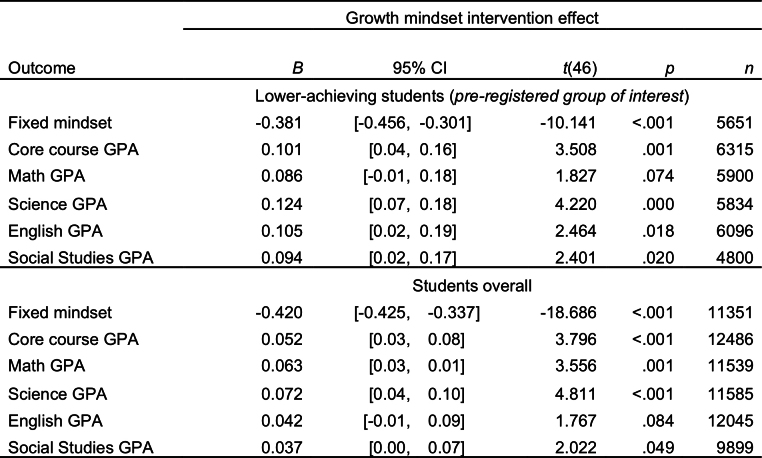Extended Data Table 1.
Growth mindset effects were of a similar magnitude across subject areas
P values are from two-sided hypothesis tests. Confirming the predictions in the pre-analysis plan, higher-achieving students demonstrated no significant treatment effects on core course GPAs, B = 0.01 grade points (95% confidence interval = −0.03–0.06), s.e. = 0.02, n = 6,170, k = 65, t = 0.480, P = 0.634, standardized mean difference effect size = 0.01, resulting in a significant intervention × lower-achiever interaction B = 0.09 grade points (95% confidence interval = 0.01–0.17), s.e. = 0.04, n = 12,490, k = 65, t = 2.179, P = 0.034). This result replicates previous research and supports the pre-registered decision to examine average GPA effects only among lower-achieving students, as higher-achieving students may have already had habits (for example, turning in work on time) and environments (for example, supportive family, teachers or peer groups) that fostered high GPAs even in the control condition.

